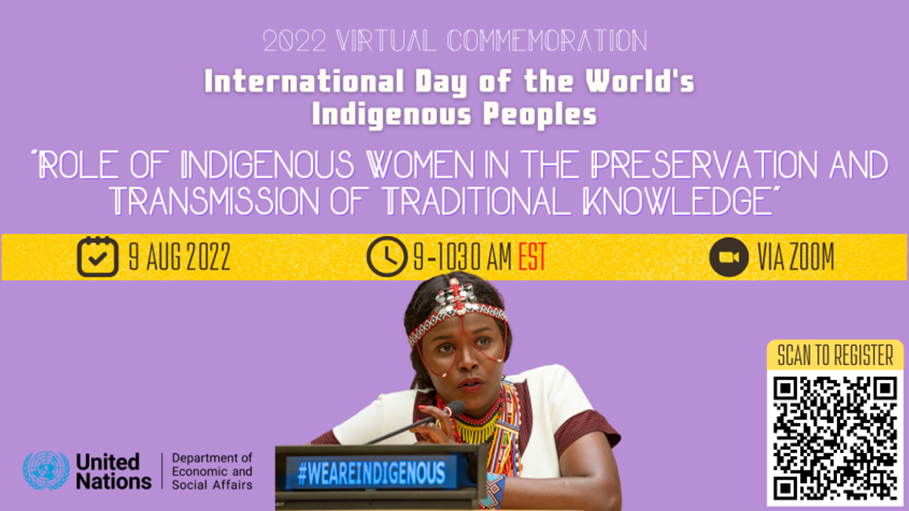 By Neenah Payne
By Neenah Payne
INTERNATIONAL DAY OF THE WORLD’S INDIGENOUS PEOPLE – August 9, 2023 explains:
The first International Day of the World’s Indigenous People was officially celebrated in August 1995. The day had been brought into existence when the 49/214 resolution was passed by the U.N. General Assembly on December 23, 1994. August 9 was chosen as the commemorative date because that was when the first meeting of the U.N. Working Group on Indigenous Populations of the Sub-Commission on the Promotion and Protection of Human Rights was held.
Every year, the day is honored by governments and organizations holding education forums and conferences to meet and discuss the social issues faced by indigenous groups worldwide. People are also given information on any ongoing and/or upcoming activities and projects that are being undertaken to help the target communities. Every year, the theme changes to shed light on a pressing topic The International Day of the World’s Indigenous People on August 9 pays tribute to the indigenous communities of the world. The latest data reveals that there are about 370 to 500 million indigenous people living in 90 countries. These communities are noted to have their own unique set of languages, traditions, cultures, and governing systems.
For many indigenous groups, the systems that their ancestors have followed for centuries have stood the test of time by serving them with positive outcomes to date. Many indigenous people’s special bond and connection with nature have also led to the protection of the general environment. However, on the other side, several indigenous communities face difficulties due to a central government’s covert and overt attempts to control their lives. This has led to indigenous people’s rights violations where they would have otherwise ensured peaceful and harmonious lives for them.
Our Survival Now Depends on Adopting The Indigenous Worldview
The article includes the chart below which shows the evolving focus on the rights of indigenous peoples. The article suggests ways to celebrate this day and points out that studies have shown that the fauna and flora, and biodiversity thrive and flourish where indigenous people reside.
The 7/19/22 article Indigenous Communities Protect 80% Of All Biodiversity shows that about 80% of the world’s biodiversity is in places where indigenous groups live. This is key to the survival of humanity as we now face the Sixth Mass Extinction. Many indigenous cultures serves as “keystone species.” All cultures need to learn to do that and to adopt the worldview of indigenous cultures now to survive.
IUCN Director General’s Statement on International Day of the World’s Indigenous Peoples 2019:
We cannot achieve conservation and wellbeing for people and planet unless we respect and value the rights of indigenous peoples. For centuries, indigenous peoples across the world have preserved much of Earth’s biodiversity. At this precipice of history, where the next decade could determine the fate of the planet’s species and ecosystems, the global community must fully acknowledge, respect and support the rights of indigenous peoples. This includes respect for the cultural, spiritual, social and environmental values they place on biodiversity.
EU Nature Restoration Law: A boost for biodiversity and climate 6/22/22
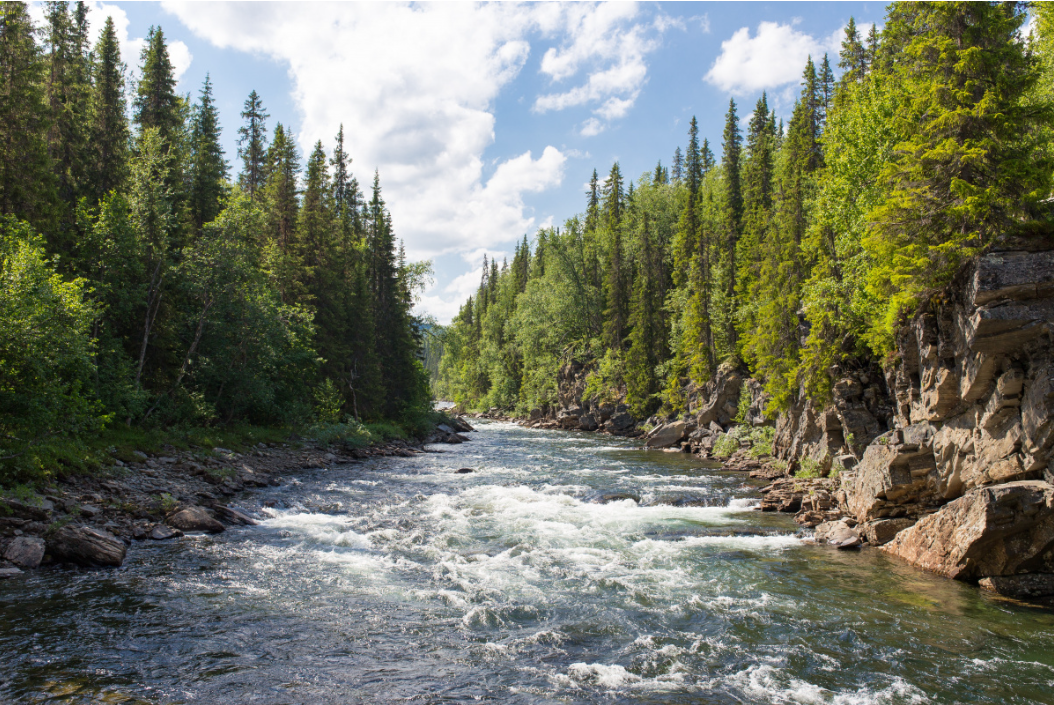 River in Gäddede, Sweden Photo: Jon Flobrant / Unsplash
River in Gäddede, Sweden Photo: Jon Flobrant / Unsplash
Indigenous Peoples’ Day Is Replacing Columbus Day in October
Columbus Day or Indigenous Peoples’ Day? explains the little-known origins of Columbus Day in 1891. After 11 Italians were lynched, President Harrison proposed a one-time celebration of Columbus which later became an annual celebration on the first Monday of October.
The October 9, 2022 New York Times article Indigenous Peoples’ Day, Explained discusses the revision of the celebration in October which used to focus on Christopher Columbus:
One year after President Biden became the first U.S. president to formally commemorate Indigenous Peoples’ Day, more than a dozen states recognize some version of the holiday in lieu of Columbus Day.
More than 130 cities have adopted the holiday, choosing to heed calls from Indigenous groups and other activists not to celebrate Christopher Columbus, the Italian navigator after whom the holiday is named. They say he brought genocide and colonization to communities that had been in the Americas for thousands of years. Many around the country, however, still celebrate Columbus Day or Italian Heritage Day as a point of pride.
Some members of Indigenous communities say recognizing the day, which this year is on Monday, Oct. 10, does not go far enough. It is not yet a federal holiday, though there are two bills in Congress — one each in the House and Senate — that propose to make it one. Here is more background.
We Urgently Need A Better Understanding of The World Now
Our Survival Now Depends on Adopting A Better Story discusses the stories that have left the Western world feeling alienated from the world’s other peoples and from plants and animals — from the Earth. That has led to an existential loneliness that fueled the “Mass Formation” (psychosis) during the COVID “pandemic” as described by Professor Mattias Desmet, in his book The Psychology of Totalitarianism.
This worldview is now driving the arrogance of The Great Reset in which the World Economic Forum warns “You will own nothing by 2030” and the Fourth Industrial Revolution which threatens to enslave all of humanity with a forced merger with Artificial Intelligence. WEF Declares ‘Humans Are a Plague’ and ‘AI Is the Cure’. It is only in recognizing now the mistaken stories of the West that it will be possible to get back to the healing concepts that can help us avoid the Sixth Mass Extinction. Time is short now.
Will the Future Be Human? – Yuval Noah Harari Jan 25, 2018
What can we learn from a history of the future? Historian Yuval Harari takes us on a journey through technological development and challenges leaders to develop a substantive vision of what it means for society, politics, religion and ideology.
Which Path Will You Choose in 2023? shows that Professor Desmet and Eckhart Tolle, author of A New Earth: Awakening to Your Life’s Purpose, The Power of Now: A Guide to Spiritual Enlightenment, Oneness With All Life, and Stillness Speaks, are calling on humanity to wake up and evolve now.
However, they don’t explain how. Fortunately, there many Native American scientists, authors, lawyers, etc. are coming forward in video lectures and books to explains the steps humanity must take now to survive and thrive.
Understanding The Secret Life of Plants
The Secret Life of Plants and Secrets of the Soil are by Peter Tompkins and Christopher Bird.
The Secret Life of Plants points out in the introduction:
The true matrix of human life is the greenward covering mother earth. Without green plants, we would neither breathe nor eat. On the undersurface of every leaf, a million movable lips are engaged in devouring carbon dioxide and expelling oxygen…. Of the 375 billion tons of food we consume each year, the bulk comes from plants which synthesize it out of air and soil with the help of sunlight. The remainder comes from animal products which, in turn, are derived from plants.
All the food, drink, intoxicants, drugs, and medicines that keep man alive and, if properly used, radiantly healthy are ours through the sweetness of photosynthesis. Sugar produces all our starches, fats, oils, waxes, cellulose. From crib to coffin, man relies on cellulose as the basis for his shelter, clothing, fuel, gibers, and basketry, cordage, musical instruments, and the paper on which he scribbles his philosophy.. the abundance of plants profitably used by man is indicated by nearly six hundred pages of Uphof’s Dictionary of Economic Plants. Agriculture — as the economists agree — is the basis for a nation’ wealth.
Instinctively aware of the aesthetic vibrations of plants, which are spiritually satisfying, human beings are happiest and most comfortable when living with flora. At birth, marriage, death, blossoms are prerequisites, as they are at mealtime or festivities. We give plants and flowers as tokens of love, of friendship, or homage, and of thanks for hospitality. Our houses are adorned with gardens, our cities with parks, our nations with national preserves.
Are We Smart Enough To Know How Smart Animals Are?
Although human beings are animals, in the Western world, we fancy ourselves quite superior in multiple ways to all other animals although we lack many of their skills and abilities. Our Survival Now Depends on Adopting A Better Story explains that we are led to see human beings as the top of the food chain. However, Native Americans know how dependent humanity is on the wisdom and help of the animal world.
Professor Robin Wall Kimmerer’s book bestseller Braiding Sweetgrass: Indigenous Wisdom, Scientific Knowledge and the Teaching of Plants says
In the Western tradition, there is a recognized hierarchy of being with, of course, the human being on top — the pinnacle of evolution, the darling of Creation — and the plants at the bottom. But in Native ways of knowing, human people are often referred to as ‘the younger brothers of Creation.’
Professor Kimmerer explains that animals taught the First Man how to live on the Earth. When Chief Oren Lyons of the Haudenosaunee (Iroquois) spoke at the United Nations years ago, he asked, “Who here speaks for the bears?” Native Americans recognize that many animals live in families — or even tribes. So, they speak, for example, of “the Bear People.”
As the Western value system is now pushing the world toward the Sixth Mass Extinction, we are driving multiple animals to extinction
Are We Smart Enough to Know How Smart Animals Are?
Amazon Description
A New York Times Bestseller. From world-renowned biologist and primatologist Frans de Waal, a groundbreaking work on animal intelligence destined to become a classic.
What separates your mind from an animal’s? Maybe you think it’s your ability to design tools, your sense of self, or your grasp of past and future―all traits that have helped us define ourselves as the planet’s preeminent species. But in recent decades, these claims have eroded, or even been disproven outright, by a revolution in the study of animal cognition.
Take the way octopuses use coconut shells as tools; elephants that classify humans by age, gender, and language; or Ayumu, the young male chimpanzee at Kyoto University whose flash memory puts that of humans to shame. Based on research involving crows, dolphins, parrots, sheep, wasps, bats, whales, and of course chimpanzees and bonobos, Frans de Waal explores both the scope and the depth of animal intelligence. He offers a firsthand account of how science has stood traditional behaviorism on its head by revealing how smart animals really are, and how we’ve underestimated their abilities for too long.
People often assume a cognitive ladder, from lower to higher forms, with our own intelligence at the top. But what if it is more like a bush, with cognition taking different forms that are often incomparable to ours? Would you presume yourself dumber than a squirrel because you’re less adept at recalling the locations of hundreds of buried acorns? Or would you judge your perception of your surroundings as more sophisticated than that of a echolocating bat? De Waal reviews the rise and fall of the mechanistic view of animals and opens our minds to the idea that animal minds are far more intricate and complex than we have assumed. De Waal’s landmark work will convince you to rethink everything you thought you knew about animal―and human―intelligence.
In the video below, it’s interesting that the tiger showed up just at the moment the man most needed his help and knew what to do to help him in two ways. Understanding that he had to find a tool and getting the appropriate tool to help his friend was something a 6-year-old kid might not be able to do. Probably an 8-year-old would know what to do and definitely a 10-year-old. So, this tiger had the cognitive ability of an 8-to-10-year old human. It’s stories like this that make it easy to understand why Native Americans see animals as our relatives. It is as though the only thing the tiger lacked was speech. Of course, a tiger can do lots of things people can’t do.
He Helped A Crying Tiger. What The Tiger Did Next Left Him Very Shocked!
Elephants Express Their Gratitude
The video below shows that elephants waved their trunks to express their profound gratitude when a man risked his life to save a baby elephant from downing.
A Man Rescues Drowning Baby Elephant. Then the Herd Surprises Everyone with an Unexpected Response 6/13/23
Picture a serene day by the river, when suddenly, a baby elephant finds itself fighting for its life, struggling to stay afloat. Just when hope seems lost, a remarkable man emerges from the shadows, risking everything to save the drowning calf. But what unfolds next will leave you astonished.
Prepare to witness a heartwarming twist like no other.
The Important Roles of Keystone Species
Native Americans believe that each part of Creation has been given a Gift which has a corresponding Responsibility. The Sun has the gift of bringing light and the responsibility to rise and shine every day. The Water has many gifts and has the responsibility of flowing. There are countless animals and other creatures that are “Keystone Species.” Unfortunately, the Western world did not understand the enormous services that Keystone Species provide and almost eliminated several of them in the 19th century out of greed – including buffalo, beavers, wolves, and oysters.
For More Information
Water Is Life Festival: September 4
Native America’s Gifts To The World
The Story of the Buffalo Is America’s Story
How Bison Are Saving America’s Lost Prairie
New York’s Ambitious Billion Oyster Project
Native Americans Are a “Keystone Species”
Pope Finally Repudiates Doctrine of Discovery!
Native American Day: Learning The Way of Earth
Can Native America Transform The World Again?
Growing Calls To Repudiate “Doctrine of Discovery”
How Reconciliation With Native America Can Save Us
Mapping a New Geography of Hope With Native America
Responses To Pope’s Repudiation of Doctrine of Discovery
Why We Need Beavers — Nature’s Carpenters and Plumbers
Putting Native America Back On The Map To Re-Discover Ourselves
Neenah Payne writes for Activist Post
Become a Patron!
Or support us at SubscribeStar
Donate cryptocurrency HERE
Subscribe to Activist Post for truth, peace, and freedom news. Follow us on SoMee, Telegram, HIVE, Flote, Minds, MeWe, Twitter, Gab, and What Really Happened.
Provide, Protect and Profit from what’s coming! Get a free issue of Counter Markets today.

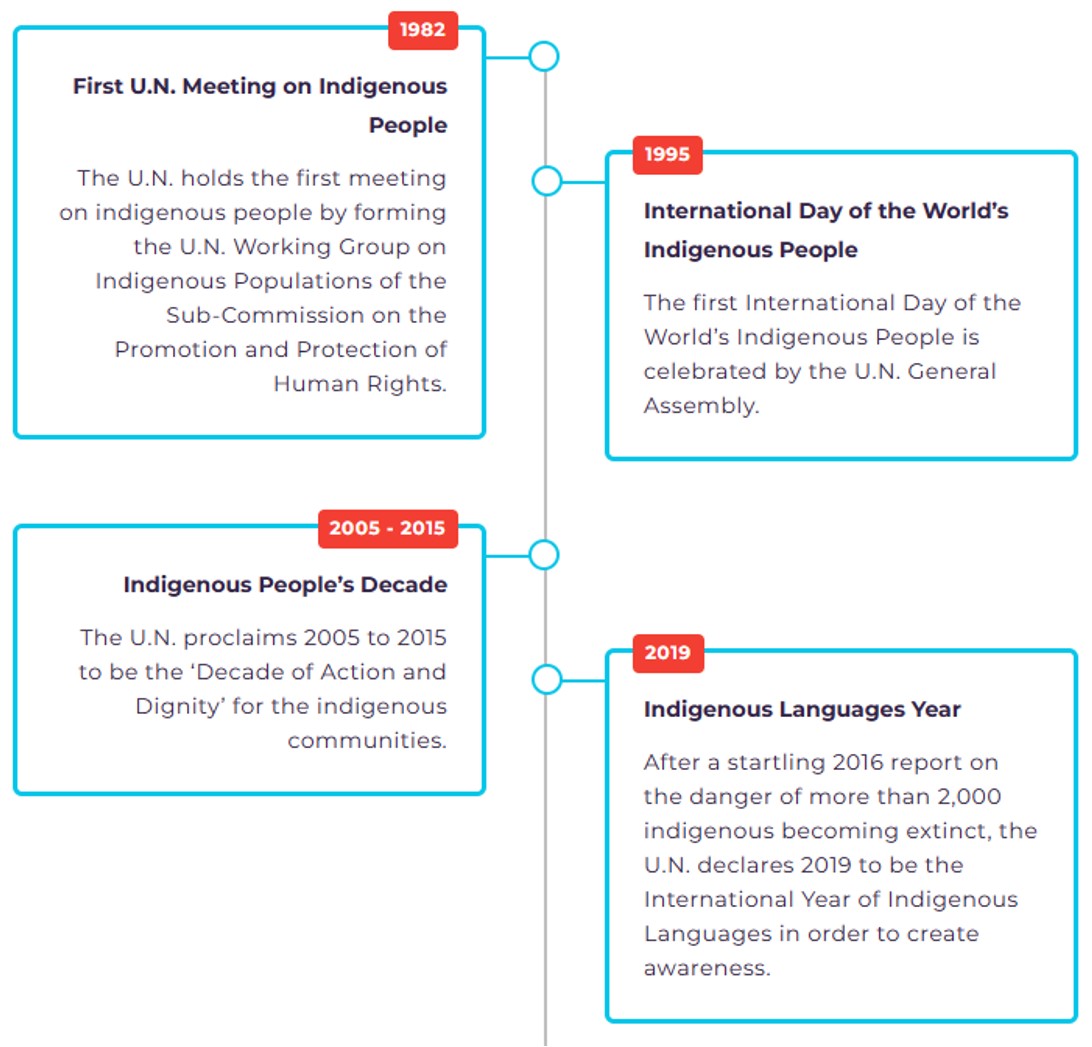
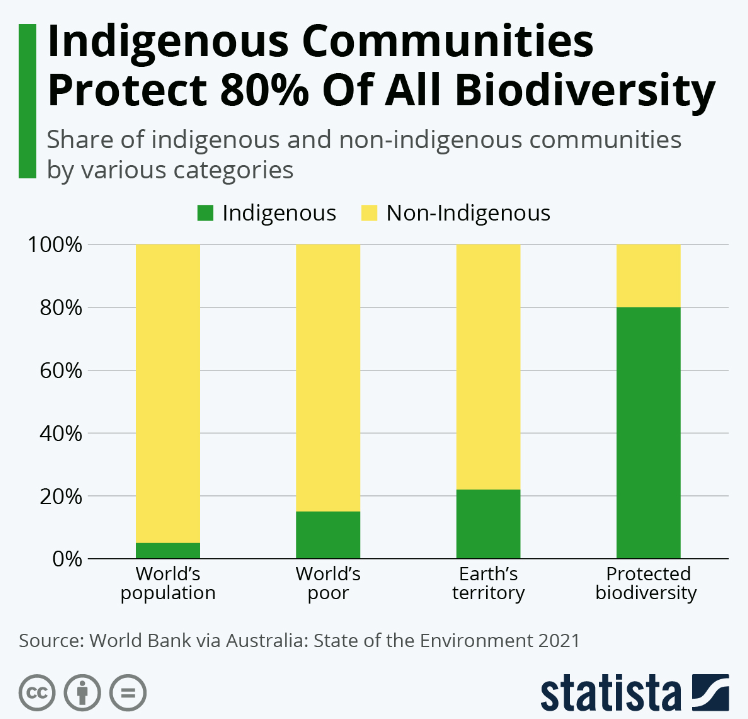

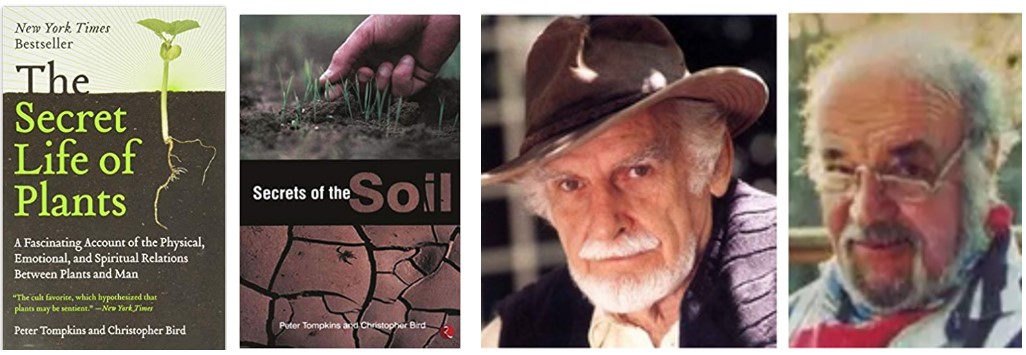

Be the first to comment on "August 9: International Day of World’s Indigenous Peoples"